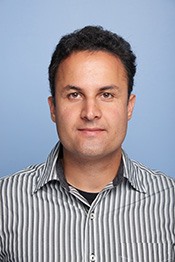Program Information
Challenges, Limitations and Future Outlook Towards Clinical Translation of Proton Acoustic Range Verification
S Yousefi1*, M Ahmad2 , L Xiang3 , S Tang4 , Y Chen5 , M Zhang6 , J Zou7 , K Umegaki8 , H Shirato9 , L Xing10 , (1) ,,,(2) Stanford University, Palo Alto, CA, (3) University of Oklahoma, Norman, OK, (4) University of Oklahoma, Norman, OK, (5) University of Oklahoma Health Sciences Center, Oklahoma City, OK, (6) Rutgers Cancer Institute of New Jersey, Rutgers The State University of New, New Brunswick, New Jersey, (7) Rutgers University, New Brunswick, NJ, (8) Faculty of Engineering, Hokkaido University, Sapporo, Hokkaido, (9) Department of Radiation Oncology, Graduate School of Medicine, Sapporo, Hokkaido, (10) Stanford University School of Medicine, Stanford, CA
Presentations
TU-FG-BRB-8 (Tuesday, August 2, 2016) 1:45 PM - 3:45 PM Room: Ballroom B
Purpose: To report our investigations of proton acoustic imaging, including computer simulations and preliminary experimental studies at clinical facilities. The ultimate achievable accuracy, sensitivity and clinical translation challenges are discussed.
Methods: The acoustic pulse due to pressure rise was estimated using finite element model. Since the ionoacoustic pulse is highly dependent on the proton pulse width and energy, multiple pulse widths were studied. Based on the received signal spectrum at piezoelectric ultrasound transducer with consideration of random thermal noise, maximum spatial resolution of the proton-acoustic imaging modality was calculated.
The simulation studies defined the design specifications of the system to detect proton acoustic signal from Hitachi and Mevion clinical machines. A 500 KHz hydrophone with 100 dB amplification was set up in a water tank placed in front of the proton nozzle. A 40 MHz data acquisition was synchronized by a trigger signal provided by the machine.
Results: Given 30-800 mGy dose per pulse at the Bragg peak, the minimum number of protons detectable by the proton acoustic technique was on the order of 10x10^6 per pulse. The broader pulse widths produce signal with lower acoustic frequencies, with 10 μs pulses producing signals with frequency less than 100 kHz. As the proton beam pulse width increases, a higher dose rate is required to measure the acoustic signal.
Conclusion: We have established the minimal detection limit for proton-acoustic range validation for a variety of pulse parameters. Our study indicated practical proton-acoustic range verification can be feasible with a pulse shorter than 10 μs, 5x10^6 protons/pulse, 50 nA beam current and a highly sensitive ultrasonic transducer.
The translational challenges into current clinical machines include proper magnetic shielding of the measurement equipment, providing a clean trigger signal from the proton machine, providing a shorter proton beam pulse and higher dose per pulse.
Contact Email:

